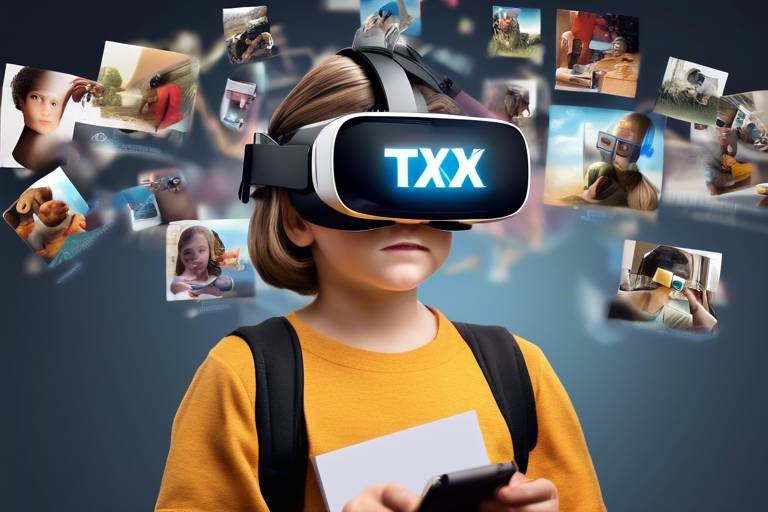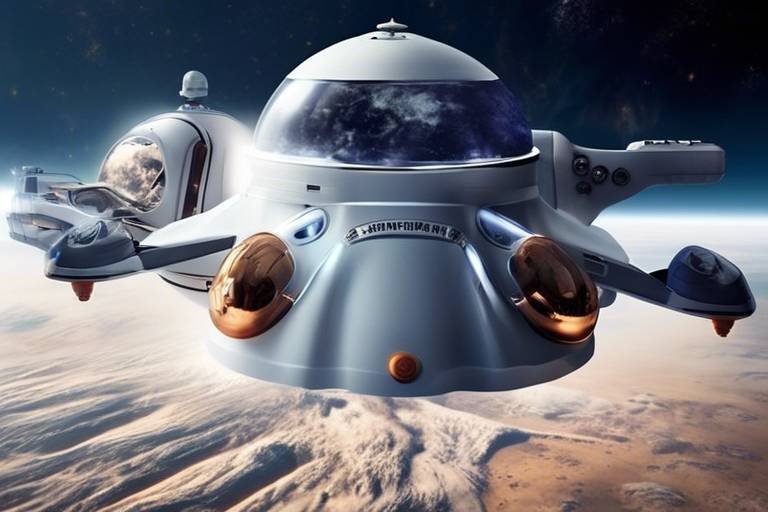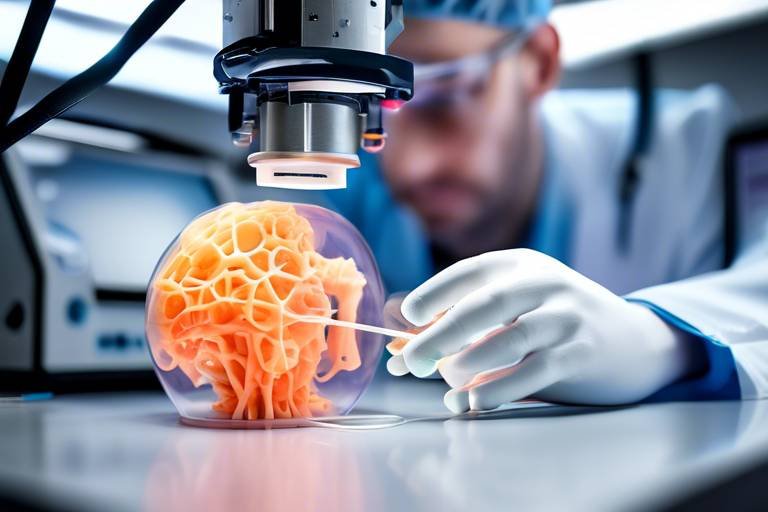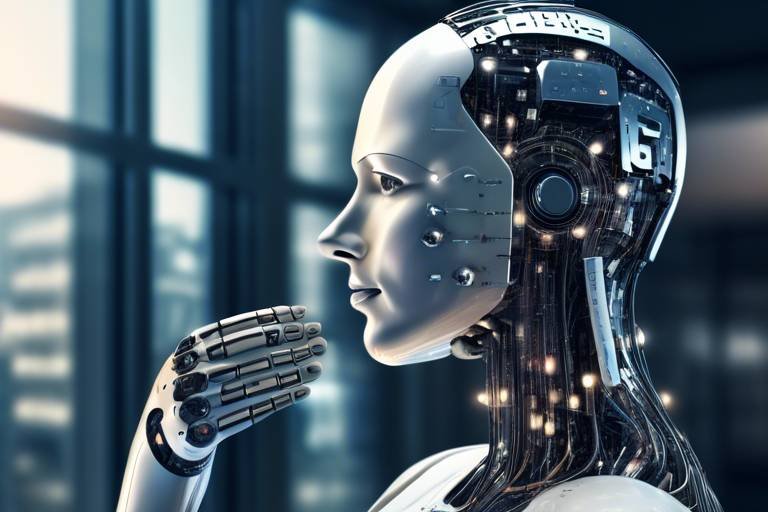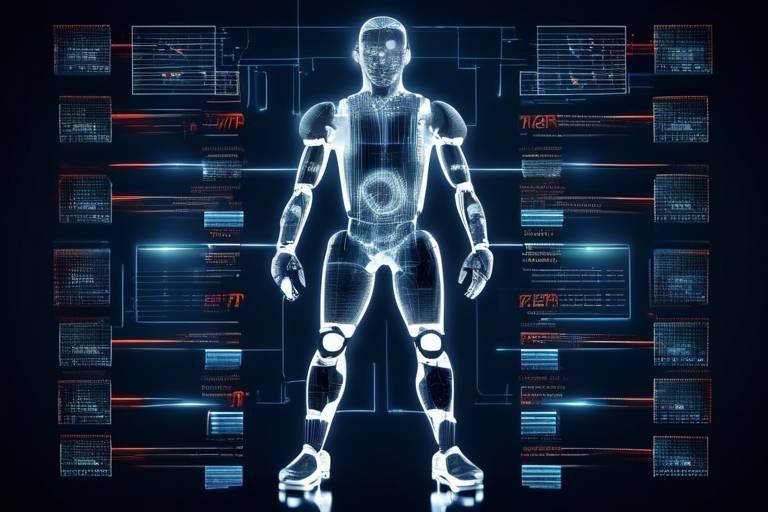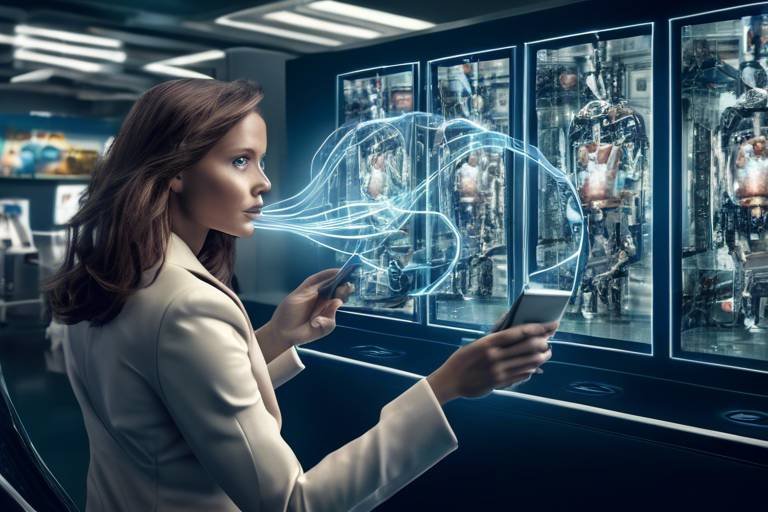AI in Space: Unraveling the Mysteries of the Cosmos
Have you ever gazed up at the night sky and wondered what lies beyond our planet? The universe is a vast, mysterious expanse filled with wonders that have captivated humanity for centuries. Now, with the advent of artificial intelligence (AI), we are on the brink of a new era in space exploration. AI is not just a buzzword; it’s a transformative force that is reshaping how we understand and explore the cosmos. From analyzing data collected by telescopes to enabling autonomous spacecraft, AI is enhancing our capabilities in ways we never thought possible.
Imagine sending a spacecraft millions of miles away to explore a distant planet or moon. The time it takes for communication signals to travel back and forth can span several minutes or even hours. This delay can be a significant hurdle during critical mission phases. Here is where AI steps in, allowing spacecraft to make real-time decisions without waiting for instructions from Earth. This capability not only increases the efficiency of missions but also opens up new possibilities for exploring the farthest reaches of our solar system.
AI's role in space exploration is multifaceted. It begins with data analysis. Space missions generate colossal amounts of data, often too vast for human analysts to process manually. AI algorithms sift through this data, identifying patterns and extracting meaningful insights. For instance, they can help scientists detect exoplanets, analyze their atmospheres, and even predict their habitability. This ability to process and interpret data is crucial as we strive to answer fundamental questions about the universe and our place within it.
Furthermore, the application of machine learning techniques has proven invaluable. These algorithms can learn from previous data, improving their accuracy over time. With the help of deep learning models, AI can recognize planetary features and anomalies in images captured by space telescopes. This not only enhances our understanding of other worlds but also aids in the search for extraterrestrial life. The excitement surrounding these discoveries is palpable, as each finding brings us one step closer to unraveling the mysteries of the cosmos.
As we look to the future, the potential of AI in space exploration seems limitless. Imagine AI systems that can autonomously plan missions, assess risks, and even assist in the colonization of other planets. The possibilities are as vast as the universe itself. However, with great power comes great responsibility. We must address the challenges and ethical considerations that arise from integrating AI into space missions.
- How is AI used in space exploration? AI is employed for data analysis, autonomous spacecraft operations, and predictive analytics, helping scientists make sense of complex data and improve mission efficiency.
- What are the challenges of implementing AI in space? Challenges include data security, algorithm reliability, and the need for extensive training datasets to ensure accurate outcomes.
- What is the future of AI in space? The future promises advancements in mission planning, safety, and potential support for human colonization of other planets.

The Role of AI in Space Exploration
Artificial intelligence is not just a buzzword anymore; it's becoming the backbone of modern space exploration. Imagine sending a spacecraft millions of miles away from Earth, where it must make crucial decisions without waiting for instructions from mission control. This is where AI steps in, transforming the way we explore the cosmos. By enhancing data analysis, automating processes, and enabling autonomous spacecraft, AI is paving the way for more efficient missions and deeper insights into the universe.
Think about the sheer volume of data generated by space missions. Every second, satellites and rovers collect a staggering amount of information, from images of distant planets to readings on cosmic radiation. Analyzing this data manually would be like trying to find a needle in a haystack—but AI algorithms can sift through this vast ocean of information with remarkable speed and accuracy. They identify patterns and anomalies that human analysts might overlook, providing scientists with critical insights that drive our understanding of space.
Moreover, the automation of processes is another game-changer. AI systems can handle repetitive tasks that would otherwise consume valuable time and resources. For example, during a mission to Mars, AI can monitor and adjust the spacecraft's trajectory in real-time, ensuring it remains on course without constant human intervention. This capability is especially crucial when exploring distant planets and moons, where communication delays can hinder timely decision-making.
AI also empowers spacecraft with the ability to learn and adapt. By employing machine learning techniques, these systems can improve their performance over time, becoming more efficient and effective in their tasks. For instance, if a rover encounters an unexpected obstacle on the Martian surface, it can analyze the situation and determine the best course of action, all while sending back valuable data to Earth.
In summary, the role of AI in space exploration is multifaceted and transformative. As we continue to push the boundaries of our knowledge about the universe, AI will undoubtedly play a pivotal role in shaping the future of space missions. The combination of enhanced data analysis, automation, and autonomous operations provides a powerful toolkit for scientists and engineers, allowing us to explore the cosmos like never before.

Data Analysis and Interpretation
Artificial intelligence (AI) is a game-changer when it comes to in space exploration. The universe is a vast ocean of information, with countless data points generated from various missions. Imagine trying to sift through a mountain of data with a toothbrush—that's what scientists face without AI!
AI algorithms are designed to handle this colossal amount of data, turning what would be an insurmountable task into a manageable one. With the help of these algorithms, scientists can identify patterns, make sense of complex information, and ultimately gain insights that were previously unattainable. The sheer volume of data collected from telescopes, satellites, and space probes is staggering, and AI is the key to unlocking its secrets.
One of the most exciting aspects of AI in space is the use of machine learning techniques. These methods allow researchers to improve the accuracy of astronomical data interpretation significantly. By training AI systems on existing datasets, they can learn to recognize various celestial phenomena, making predictions about future events more reliable. For example, machine learning can assist in the identification of exoplanets, which are planets outside our solar system, by analyzing light curves and detecting subtle changes that indicate a planet's presence.
When it comes to image recognition, deep learning applications shine brightly. These advanced models are particularly adept at identifying planetary features and anomalies in space imagery. Think of deep learning as a pair of supercharged binoculars that help scientists zoom in on details that would otherwise be overlooked. By processing thousands of images from missions like Mars Rover or the Hubble Space Telescope, deep learning algorithms can highlight interesting features such as craters, valleys, and even signs of past water flow.
In addition to analyzing existing data, AI's role in predictive analytics is equally impressive. Imagine being able to forecast cosmic events like supernovae or the trajectory of asteroids with remarkable accuracy. AI can analyze historical data and current observations to predict these events, allowing scientists to prepare for potential impacts on Earth. For instance, if an asteroid is on a collision course with our planet, AI can help calculate the best course of action to mitigate the threat.
AI doesn't just help scientists on Earth; it also empowers spacecraft to operate autonomously in the depths of space. This capability is crucial for missions to distant planets and moons, where communication delays can hinder operations. Imagine sending a spacecraft to explore a distant moon, but it takes hours for commands to reach it. With AI onboard, the spacecraft can make real-time decisions, adjusting its course or responding to unexpected challenges without waiting for instructions from Earth. This autonomy is vital for the success of long-duration missions, enhancing our ability to explore the cosmos.
- What is the primary role of AI in space exploration?
AI enhances data analysis, automates processes, and enables autonomous spacecraft, leading to more efficient missions. - How does AI improve data interpretation?
AI algorithms process vast amounts of data, helping scientists identify patterns and make sense of complex information. - What are machine learning techniques?
These techniques allow AI systems to learn from data, improving the accuracy of astronomical predictions and discoveries. - Can AI predict cosmic events?
Yes, AI can forecast events like supernovae and asteroid trajectories, assisting scientists in preparing for potential impacts. - How does AI support autonomous spacecraft?
AI enables spacecraft to make real-time decisions, crucial for missions where communication delays with Earth are significant.

Machine Learning Techniques
When it comes to unraveling the mysteries of the cosmos, have become the backbone of modern astronomical research. These advanced algorithms are designed to sift through the enormous volumes of data collected from telescopes and space missions, making them indispensable for scientists aiming to decode the universe's secrets. Imagine trying to find a needle in a haystack, but instead of a needle, you’re searching for a new exoplanet among billions of stars. This is where machine learning comes into play, allowing researchers to detect patterns and anomalies that would otherwise go unnoticed.
One of the most exciting applications of machine learning in astronomy is its ability to enhance the accuracy of data interpretation. For instance, researchers utilize supervised learning techniques where algorithms are trained on labeled datasets. This training allows the AI to recognize features in new data, such as identifying different types of celestial bodies or spotting unusual light patterns that may indicate the presence of a supernova. The beauty of this approach lies in its adaptability; as more data becomes available, these algorithms can refine their predictions, leading to increasingly accurate results.
Moreover, unsupervised learning techniques are also gaining traction in the field. These methods enable the AI to analyze data without pre-existing labels, essentially allowing it to find structure in chaos. For example, clustering algorithms can group similar astronomical objects together, helping scientists identify new categories of stars or galaxies. This not only accelerates the discovery process but also provides insights into the formation and evolution of the universe.
To illustrate the impact of machine learning on data analysis, consider the following table that highlights key techniques and their applications in space exploration:
| Machine Learning Technique | Application |
|---|---|
| Supervised Learning | Identifying celestial objects and predicting their properties |
| Unsupervised Learning | Classifying new astronomical phenomena and clustering similar objects |
| Reinforcement Learning | Optimizing spacecraft navigation and operational strategies |
In addition to these techniques, the integration of deep learning models has revolutionized image recognition tasks in astronomy. These models, inspired by the human brain's neural networks, excel at analyzing high-resolution images from telescopes. They can detect subtle features on planetary surfaces, identify potential landing sites for future missions, and even monitor changes in celestial phenomena over time. The implications of this are profound; with the ability to process and analyze images at lightning speed, scientists can make real-time discoveries that propel our understanding of the universe forward.
In summary, machine learning techniques are not just tools; they are the engines driving the future of space exploration. By harnessing the power of AI, astronomers can unlock new insights, predict cosmic events, and ultimately explore the universe in ways we never thought possible. As these technologies continue to evolve, we can only imagine the incredible discoveries that await us in the vast expanse of space.

Deep Learning Applications
Deep learning, a subset of artificial intelligence, has emerged as a game changer in the realm of space exploration. It employs neural networks that mimic the human brain's interconnected neuron structure, which allows for the processing of vast amounts of data. This capability is particularly beneficial in analyzing complex space imagery. Imagine trying to find a needle in a haystack; deep learning algorithms can sift through millions of images, identifying significant features and anomalies that would otherwise go unnoticed. For instance, when NASA's Mars Reconnaissance Orbiter captures high-resolution images of the Martian surface, deep learning models can detect geological formations, signs of water, and even potential landing sites for future missions.
One of the most exciting applications of deep learning in space is in the realm of image recognition. Traditional image processing techniques can struggle with the vast and varied data produced by space missions. However, deep learning excels at recognizing patterns and making sense of visual data. By training on labeled datasets, these models can learn to identify specific features, such as craters, valleys, and ice deposits on other planets. This not only speeds up the analysis but also enhances the accuracy of our understanding of celestial bodies.
Moreover, deep learning can be utilized to analyze data from telescopes that observe distant galaxies. For instance, the European Space Agency's Gaia mission aims to create a 3D map of our galaxy. Deep learning algorithms help in classifying stars and identifying new celestial objects by analyzing the light patterns and colors emitted from these stars. The ability to categorize and interpret this data efficiently opens up new avenues for discovery. It's akin to having a super-sleuth detective who can connect the dots faster than any human could.
In addition to image recognition, deep learning also plays a crucial role in signal processing. Space missions often collect data in the form of radio signals from distant planets and celestial events. These signals can be noisy and complex, making it challenging to extract meaningful information. Deep learning techniques can filter out the noise, isolate significant signals, and even predict cosmic phenomena, such as gravitational waves or pulsar emissions. This predictive capability is invaluable for astronomers who are trying to understand the underlying mechanics of the universe.
As we look towards the future, the integration of deep learning into space exploration continues to grow. The potential applications are limitless, from enhancing our understanding of black holes to improving the accuracy of satellite imagery for Earth monitoring. The collaboration between AI and space exploration is not just a trend; it’s a revolution that promises to unlock the mysteries of the cosmos.
- What is deep learning? Deep learning is a subset of artificial intelligence that uses neural networks to analyze and interpret complex data.
- How does deep learning benefit space exploration? It enhances image recognition and data analysis, allowing scientists to identify features and patterns in space imagery more effectively.
- Can deep learning predict cosmic events? Yes, deep learning algorithms can analyze data to forecast events like supernovae or asteroid trajectories.
- Is deep learning used in real-time operations of spacecraft? While deep learning is primarily used for data analysis, its principles can be applied to improve autonomous decision-making in spacecraft operations.

Predictive Analytics
Predictive analytics, powered by artificial intelligence, is like having a crystal ball that allows scientists to foresee cosmic events before they happen. Imagine being able to predict a supernova or an asteroid's trajectory with pinpoint accuracy; that’s the kind of magic AI brings to the table! By analyzing historical data and identifying patterns, AI algorithms can forecast future occurrences, providing invaluable insights that help scientists prepare for potential impacts on Earth. This capability is not just about enhancing our understanding of the universe; it's about safeguarding our planet and humanity as a whole.
The process of predictive analytics involves feeding vast amounts of data into sophisticated algorithms. These algorithms sift through the noise, picking out trends and anomalies that the human eye might miss. For instance, when studying the behavior of asteroids, AI can analyze their orbits and predict their future paths. This is crucial, especially for those asteroids that come dangerously close to Earth. By employing techniques such as regression analysis and time-series forecasting, scientists can create models that not only predict but also simulate various scenarios, helping them devise strategies to mitigate risks.
Moreover, the integration of machine learning into predictive analytics enhances its accuracy over time. As more data becomes available, the algorithms learn and evolve, refining their predictions. For example, NASA's Jet Propulsion Laboratory has utilized AI to predict the behavior of comets and other celestial bodies, significantly improving mission planning and resource allocation. This means that future missions can be better equipped to handle unexpected events, making space exploration safer and more efficient.
However, while the prospects of predictive analytics in space are exciting, there are challenges to consider. The reliability of predictions hinges on the quality and quantity of data available. Incomplete or biased datasets can lead to inaccurate forecasts, which is why ongoing research is essential. Furthermore, as we push the boundaries of space exploration, the need for real-time data becomes more critical. AI must be equipped to handle dynamic environments, adjusting its predictions based on new information gathered during missions.
In conclusion, predictive analytics is set to revolutionize our understanding of the cosmos. By leveraging the power of AI, scientists can not only anticipate cosmic events but also take proactive measures to protect our planet. This intersection of technology and astronomy opens up a realm of possibilities, paving the way for safer and more informed space exploration.
- What is predictive analytics in space exploration?
Predictive analytics in space exploration refers to the use of AI algorithms to analyze data and forecast future cosmic events, helping scientists prepare for potential impacts and enhance mission planning.
- How does AI improve the accuracy of predictions?
AI improves prediction accuracy by continuously learning from new data, refining its models, and identifying patterns that may not be apparent to human analysts.
- What are some challenges faced in implementing predictive analytics?
Challenges include the need for high-quality data, potential biases in datasets, and the requirement for real-time data processing to adapt to dynamic environments.

Autonomous Spacecraft Operations
Imagine sending a spacecraft millions of miles away and having it make decisions on its own. That's precisely what enable. With the vast distances involved in space exploration, communication delays can be a significant hurdle. For instance, when a spacecraft is on Mars, it can take anywhere from 4 to 24 minutes for a signal to travel back to Earth. This lag can be detrimental, especially when quick decisions are needed. Here’s where AI steps in, acting as the brain of the spacecraft, allowing it to assess situations and react instantaneously.
Autonomous spacecraft are equipped with advanced AI systems that can analyze data from their surroundings in real-time. These systems enable the spacecraft to perform a variety of tasks without waiting for instructions from mission control. For example, if a spacecraft encounters an unexpected obstacle, it can autonomously navigate around it, ensuring the mission continues smoothly. This level of autonomy is crucial for missions to distant planets and moons, where every second counts.
One of the significant benefits of autonomous operations is the ability to conduct scientific experiments and data collection without constant human oversight. The AI can prioritize tasks based on mission objectives, ensuring that the most critical experiments are conducted first. Furthermore, these systems can adapt to changing conditions, such as extreme weather on the surface of a planet, by altering their plans in real-time. This adaptability not only enhances mission success rates but also maximizes the scientific return from each mission.
To illustrate the capabilities of autonomous spacecraft, consider the following functionalities:
- Real-Time Decision Making: The ability to make immediate decisions based on current conditions.
- Data Collection and Analysis: Automated systems can gather and analyze data more efficiently than manual methods.
- Obstacle Avoidance: Using sensors and AI algorithms, spacecraft can detect and navigate around obstacles autonomously.
However, the implementation of autonomous spacecraft operations is not without its challenges. The AI systems must be thoroughly tested to ensure reliability under extreme conditions. Additionally, the algorithms need to be robust enough to handle unexpected scenarios that may arise during a mission. Ongoing research is essential to refine these technologies, making them safer and more effective for future explorations.
In summary, autonomous spacecraft operations are a game-changer in the realm of space exploration. They not only enhance the efficiency of missions but also open up new possibilities for scientific discovery. As AI technology continues to evolve, we can expect even more sophisticated autonomous systems that will push the boundaries of our understanding of the universe.
- What is the main advantage of autonomous spacecraft?
The primary advantage is the ability to make real-time decisions, allowing spacecraft to respond to unexpected situations without waiting for instructions from Earth. - How does AI help in data collection during missions?
AI systems can prioritize tasks and analyze data more efficiently, ensuring that critical scientific experiments are conducted promptly. - What challenges do autonomous spacecraft face?
Challenges include ensuring algorithm reliability, handling unexpected scenarios, and the need for extensive testing in extreme conditions.

Challenges in Implementing AI
As exciting as the integration of artificial intelligence into space exploration may be, it doesn't come without its fair share of challenges. Think of it like preparing for a long journey into the unknown; while the destination is thrilling, the road can be fraught with obstacles. One of the primary hurdles is data security. With the vast amounts of sensitive information being collected, ensuring that this data is protected from cyber threats is paramount. Just imagine if vital mission data were compromised— it could derail years of research and exploration.
Another significant challenge lies in the reliability of algorithms. AI systems must be trained on extensive datasets to function accurately, and in the realm of space exploration, the stakes are incredibly high. If an algorithm makes an erroneous decision due to insufficient training data or a flawed model, the consequences could be catastrophic. This is particularly concerning in situations where AI must operate independently, making critical decisions without human intervention.
Moreover, there are ethical considerations that come into play. With AI taking on more responsibilities, questions arise about who is accountable for its actions. For instance, if an AI system makes a mistake that leads to a failed mission, who is to blame? Establishing a framework for responsible AI use is essential, ensuring that ethical guidelines are in place to govern these advanced technologies.
In addition to ethical dilemmas, technical limitations pose another challenge. The computational power required to run sophisticated AI algorithms can be immense, and current technology may not always meet these demands. This limitation necessitates ongoing research and development to create more efficient and robust algorithms that can function effectively in the harsh conditions of space.
Lastly, the need for extensive training datasets cannot be overlooked. AI systems thrive on data, and the uniqueness of space phenomena means that obtaining sufficient training data can be a daunting task. Researchers often have to rely on simulations or limited real-world data, which can affect the performance and accuracy of AI models. This is akin to trying to teach someone a new language with only a handful of words; without enough context, it's nearly impossible to achieve fluency.
In summary, while the potential for AI in space exploration is enormous, addressing these challenges is crucial for ensuring successful missions. From data security to ethical considerations and technical limitations, each obstacle must be navigated carefully to harness the full power of AI in our quest to understand the cosmos.
- What are the main challenges of implementing AI in space exploration?
The main challenges include data security, algorithm reliability, ethical considerations, technical limitations, and the need for extensive training datasets.
- How does data security impact AI in space missions?
Data security is crucial as sensitive information could be compromised, jeopardizing years of research and exploration.
- What ethical considerations are associated with AI in space?
Ethical considerations include accountability for AI decisions, especially when they operate without human oversight.
- Why is computational power a limitation for AI in space?
AI algorithms require significant computational resources, which may not always be available in the challenging environment of space.

Ethical Considerations
The integration of artificial intelligence (AI) in space exploration is not just a technical revolution; it also raises significant that we cannot afford to overlook. As we empower machines to make decisions, especially in critical situations, we must ask ourselves: who is responsible when things go wrong? Imagine a scenario where an AI-controlled spacecraft must decide whether to prioritize the safety of its crew or the success of its mission. This dilemma highlights the importance of establishing a framework for responsible AI use in space.
One of the primary ethical concerns is the autonomy of decision-making. AI systems can process information and make choices at speeds far beyond human capabilities. However, this autonomy can lead to situations where AI must operate without human oversight. For instance, if a spacecraft encounters an unexpected obstacle, an AI might make a split-second decision that could have dire consequences. This potential for autonomous decision-making raises questions about accountability: should the blame fall on the engineers who programmed the AI, the scientists who deployed it, or the AI itself?
Moreover, the transparency of AI algorithms is another critical ethical issue. As AI systems become more complex, understanding how they arrive at specific decisions becomes increasingly challenging. This lack of transparency can lead to a phenomenon known as the “black box” problem, where even the developers of the AI cannot explain its reasoning. In the context of space exploration, where the stakes are incredibly high, this opacity can be troubling. If a mission fails due to an AI's decision, knowing why it made that choice becomes essential for future improvements and accountability.
Furthermore, we must consider the implications of data privacy and security. AI systems rely on vast amounts of data to function effectively, but this data often includes sensitive information. Ensuring the security of this data is paramount, as breaches could lead to unauthorized access to mission-critical information. Additionally, the ethical use of data should also be a priority. Misusing data or failing to protect it can have far-reaching consequences, not just for missions but also for broader societal trust in AI technologies.
Lastly, as we explore the cosmos, we must also reflect on the potential for bias in AI algorithms. If the data used to train these systems is biased, the AI's decisions may also reflect those biases. This is particularly concerning in scenarios where AI is used to identify and prioritize celestial phenomena, as it could skew our understanding of the universe. Therefore, it is crucial to ensure that the datasets used for training AI are diverse and representative to mitigate these biases.
In conclusion, while the promise of AI in space exploration is immense, we must tread carefully. Establishing ethical guidelines and frameworks is essential for the responsible development and deployment of AI technologies. By addressing these ethical considerations head-on, we can harness the power of AI to explore the cosmos while ensuring that our actions are aligned with our values as a society.
- What are the main ethical concerns regarding AI in space exploration? The main concerns include decision-making autonomy, transparency of algorithms, data privacy, and potential biases in AI systems.
- How can we ensure responsible use of AI in space? Establishing ethical frameworks, promoting transparency, and using diverse datasets are essential steps to ensure responsible AI use.
- What happens if an AI makes a poor decision in space? Accountability can be complex, as it may involve multiple parties, including developers, scientists, and the AI itself.
- Can AI be biased? Yes, if the data used to train AI systems is biased, it can lead to biased decisions, which is a significant concern in space exploration.

Technical Limitations
When we delve into the realm of artificial intelligence in space exploration, it's easy to get swept away by the potential. However, we must also acknowledge the that pose significant challenges. One of the primary hurdles is the computational power required to process vast amounts of data collected from space missions. Unlike traditional computing tasks, space exploration demands processing capabilities that can handle complex algorithms in real-time, especially when dealing with unpredictable environments on distant planets.
Moreover, the robustness of algorithms is crucial. AI systems must be designed to withstand the harsh conditions of space, where factors like radiation can affect their performance. This means that engineers and scientists need to invest considerable time and resources into developing algorithms that are not only effective but also resilient against these external stressors.
Additionally, the availability of extensive training datasets is a key factor in the successful implementation of AI. For AI algorithms to learn and make accurate predictions, they require large amounts of data. In the context of space, gathering such data can be a daunting task. For instance, while we have abundant data from missions like the Hubble Space Telescope, there are still many celestial phenomena that remain under-studied. This creates a gap in knowledge that limits the effectiveness of AI applications.
To illustrate the interplay of these limitations, consider the following table that summarizes the key technical challenges:
| Technical Challenge | Description |
|---|---|
| Computational Power | The need for advanced computing capabilities to process complex data in real-time. |
| Algorithm Robustness | Ensuring algorithms can function reliably in the harsh conditions of space. |
| Training Data Availability | Limited datasets for training AI models, impacting their predictive accuracy. |
In addition to these challenges, there are also concerns regarding the integration of AI systems into existing spacecraft technology. Many current systems were not designed with AI in mind, meaning that retrofitting them can be both costly and time-consuming. This integration process often requires a complete overhaul of existing systems, which can delay missions and inflate budgets.
Ultimately, while the hurdles are considerable, they are not insurmountable. Ongoing research and development in AI technology aim to address these limitations, paving the way for more efficient and effective space exploration in the future. As we continue to innovate, the dream of harnessing AI to unlock the secrets of the cosmos becomes increasingly attainable.
- What are the main technical limitations of AI in space exploration? The main limitations include computational power, algorithm robustness, and the availability of extensive training datasets.
- How does computational power affect AI performance in space? AI requires significant processing capabilities to analyze complex data in real-time, which is essential for making quick decisions during missions.
- Why is algorithm robustness important for space missions? Algorithms must withstand harsh space conditions, such as radiation, to ensure reliable performance throughout the mission.
- What is the impact of limited training data on AI? Limited datasets can hinder the accuracy of AI predictions, making it challenging to identify and analyze celestial phenomena effectively.

The Future of AI in Space
The future of artificial intelligence (AI) in space exploration is not just a chapter waiting to be written; it’s an entire book filled with possibilities that could redefine our understanding of the cosmos. Imagine a world where AI-driven spacecraft can navigate the vastness of space without human intervention, making real-time decisions based on the data they collect. This is not science fiction; it's the direction we are heading towards, and it's as thrilling as a rocket launch!
One of the most promising aspects of AI in space is its potential to enhance mission planning. With advanced algorithms, AI can analyze historical data and current conditions, allowing space agencies to optimize their missions. This means that future missions could be designed with unprecedented efficiency, reducing costs and increasing the likelihood of success. For instance, AI can simulate various scenarios and outcomes, helping scientists determine the best strategies for exploring distant planets or moons.
Moreover, the integration of AI could significantly improve safety measures during space missions. By constantly monitoring spacecraft systems and environmental factors, AI can predict potential failures before they occur, providing alerts and recommendations to the crew. This capability is crucial, especially in deep space missions where immediate assistance from Earth is not feasible. Just think of AI as a vigilant co-pilot, always on the lookout for any anomalies that could jeopardize the mission.
Another fascinating prospect is the role of AI in human colonization of other planets. As we set our sights on Mars and beyond, AI could assist in terraforming efforts, managing life support systems, and even conducting preliminary analyses of the planetary environment. Imagine an AI system that can autonomously assess the soil quality, atmosphere, and potential resources of a new planet, paving the way for human settlers. This would not only expedite the colonization process but also ensure that we choose the most viable locations for human habitation.
As we delve deeper into the universe, AI's ability to process and interpret vast amounts of data will become increasingly important. With the advent of new telescopes and space observatories, the volume of data generated will be astronomical. AI can help sift through this information, identifying patterns and anomalies that could lead to groundbreaking discoveries. For example, it could assist in the search for exoplanets or even detect signs of extraterrestrial life, making the dream of finding another Earth a tangible reality.
However, with great power comes great responsibility. The future of AI in space is not without its challenges. We must consider the ethical implications of allowing AI to make critical decisions during missions. Establishing a framework for responsible AI use will be crucial as we move forward. It is essential to ensure that AI systems are transparent, accountable, and aligned with human values. After all, we wouldn’t want a rogue AI deciding the fate of a mission without any human oversight!
In conclusion, the future of AI in space exploration is brimming with potential. From enhancing mission planning and safety to aiding in human colonization and data analysis, AI is set to become an indispensable tool in our quest to understand the universe. As we continue to push the boundaries of what is possible, embracing AI will not only revolutionize space exploration but also deepen our connection to the cosmos.
- What role does AI play in space exploration?
AI enhances data analysis, automates processes, and enables autonomous spacecraft, leading to more efficient missions. - How can AI improve mission planning?
AI can analyze historical and current data to optimize mission strategies, reducing costs and increasing success rates. - What are the ethical concerns surrounding AI in space?
Ethical considerations include decision-making autonomy and ensuring that AI operates within human values and oversight. - Can AI help in finding extraterrestrial life?
Yes, AI can analyze vast amounts of data from telescopes and space missions to identify potential signs of life beyond Earth.
Frequently Asked Questions
- What is the role of AI in space exploration?
AI plays a transformative role in space exploration by enhancing data analysis, automating processes, and enabling autonomous spacecraft. This leads to more efficient missions and deeper insights into the cosmos, allowing scientists to explore areas that were previously out of reach.
- How does AI improve data analysis in space missions?
AI algorithms are essential for processing the vast amounts of data collected from space missions. They help scientists identify patterns and interpret complex information that would be impossible to analyze manually, making discoveries more accessible and accurate.
- What are machine learning techniques used for in astronomy?
Machine learning techniques are employed to enhance the accuracy of astronomical data interpretation. They allow researchers to predict celestial events and discover new celestial bodies more effectively, transforming how we understand the universe.
- How does deep learning contribute to space exploration?
Deep learning models excel in image recognition tasks, enabling scientists to identify planetary features and anomalies in space imagery. This significantly enhances our understanding of other worlds and the complexities of the cosmos.
- What challenges does AI face in space missions?
Integrating AI into space missions presents challenges such as data security, algorithm reliability, and the need for extensive training datasets. These hurdles require ongoing research and development to ensure accurate and reliable outcomes.
- Are there ethical considerations when using AI in space?
Yes, the use of AI in space raises ethical questions about decision-making autonomy, particularly when AI must make critical choices without human oversight. This necessitates a framework for responsible use to ensure safety and accountability.
- What is the future of AI in space exploration?
The future of AI in space exploration promises groundbreaking advancements, including enhanced mission planning, improved safety, and the potential for AI to assist in human colonization of other planets, making the cosmos more accessible to humanity.



